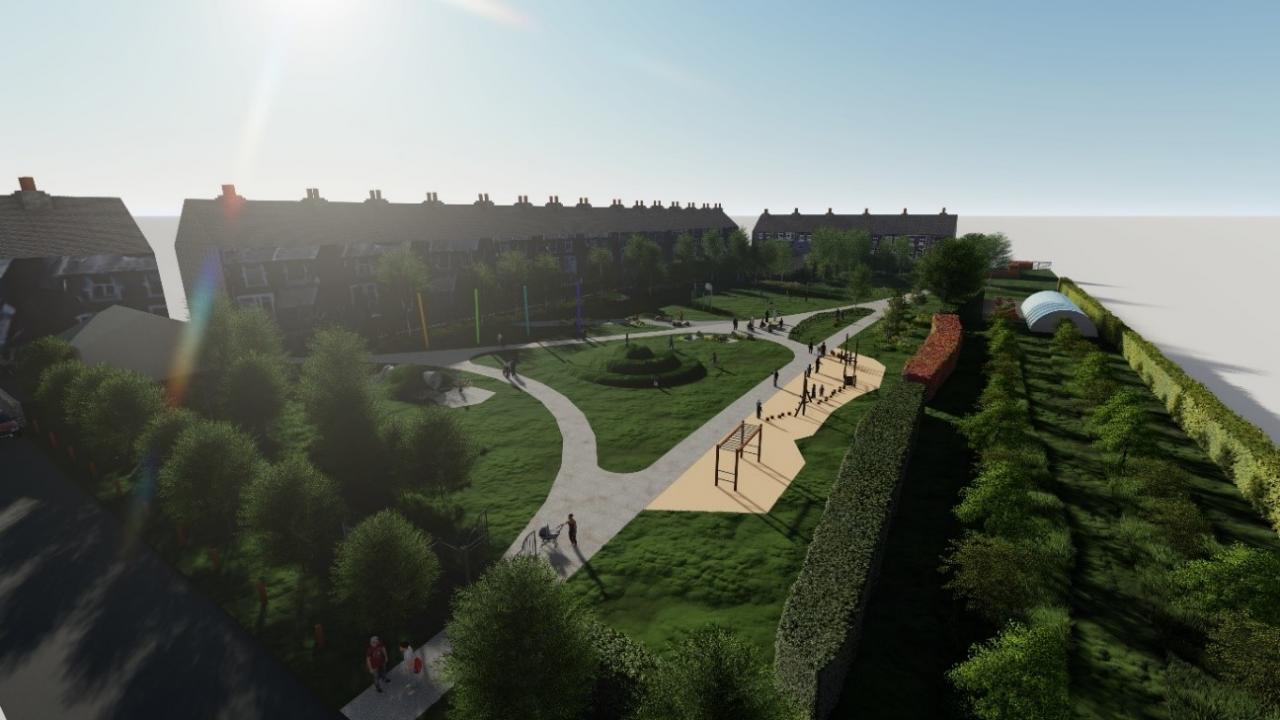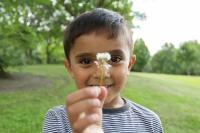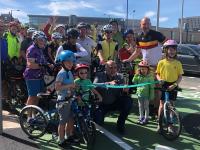
Our vision is to create an urban environment that is distinctive, successful and a great place to live, work and play. The ultimate idea is to create a Healthy City where our inner-city population experiences an attractive healthy environment.
Bradford has a young population, where almost a quarter of the community are under 16. Our urban population is diverse, with 1 in 4 people across the district describing themselves as of Asian/Asian British origin. The city has high levels of deprivation, which are concentrated in our urban neighbourhoods, where most of our BaME communities live, and therefore deprivation impacts disproportionately on their wellbeing and life chances.
Put the people at the heart of the transformation
Our ambition is to have a city centre that is transformed to enable new and sustainable styles of living that are attractive to all our communities, provides economic opportunity for all and is the cultural heart of the district. We aim to put our people at the heart of this transformation. This will be achieved by using innovative design and delivery, as well as collaborative working and capacity building to ensure all people and stakeholders are able to shape this future. A bottom up approach that starts with our people.
We have a strong history of new communities settling in our district and creating prosperous, happy lives. There is strength in our city’s diversity, with more than 150 languages spoken and an abundance of international connections, we are a truly global city. Creativity and innovation are most powerful when people with different ideas come together and inspire each other to produce beyond each of their imaginations. Cities are where this coming together of people and ideas happens – it is the kind of future we want for our city and our people.

Sustainable Mobility
We want more options for sustainable travel into the city by public transport and active travel modes to land people in a safe, attractive, inclusive environment. By using high-quality urban design and nature-based approaches we will create legible onward routes to key destinations. This will encourage people to make their commute into the city more active. It will enable people of all ages, and abilities and from all walks of life, to walk or wheel through an accessible, attractive city centre. It will encourage workers, visitors and the increasing number of city-centre residents to explore, to linger, to discover what the city has to offer, and to return again and again.
Our Healthy City will be a place that communicates that our young population is valued and supported, in a child and young person friendly city environment. We want to embody the principle that a city that works for children is a good place for everyone. We want children and young people to know that they are safe and valued members of our community whose voices are key to all that we do and to involve them in meaningful ways in developing plans for the city and other urban centres over the coming years.
Tree for every Child programme
In November, Bradford Council launched The Tree for Every Child programme as part of National Tree Planting Week. £250,000 is being invested to plant a tree for every primary school child. This means approximately 55,000 trees being planted across the district over the next two years.
Schools and community groups were given a range of options as to how they could get involved, including helping to plant in two new dedicated woods in the district; starting a school orchard; being given a bundle of native trees to plant in the school grounds or receiving some trees to take away to plant in the garden.
This community initiative is supported by Trees for Cities, Forest of Bradford (Bradford Environmental Action Trust), Woodhouse Community Growers, town and parish councils and other community groups. The story was even featured on BBC TVs CountryFile programme.
(https://www.bbc.co.uk/programmes/m000pzlx)
Healthy travel for school children
Bradford Council is launching a pilot scheme designed to encourage more sustainable and healthy travel for school children. The scheme will help to improve safety and reduce air pollution levels at the school gates; at the beginning and end of the school day.
School Streets will be trialled at 11 primary schools across the district, and will limit traffic on a number of roads close to schools at drop off and pick up times. This will mean the majority of vehicles will not be allowed to drive into these streets at the start and end of the school day.
It is hoped the scheme will encourage parents to leave the car at home and walk, scoot or cycle with their children to school wherever possible, and for those who can’t avoid driving to their child’s school, it is hoped that they will park some distance away from the school gates and walk the rest of the way, providing an easy way to get more exercise and help make schools safer whilst reducing harmful car exhaust emissions in the air around the schools as a ‘park and stride’ arrangement.

Challenges of the Integrated Action Plan
Through our involvement in URBACT, Bradford plans to use the knowledge and experience of the other Healthy Cities participants to inspire our own Integrated Action Plan. During the Activation Phase of URBACT Healthy Cities, we have already discovered how many of the challenges that exist in our urban environment are shared throughout Europe, but also we have been motivated by the interesting ideas being explored to promote public health and wellbeing in these communities.
As we move into the Planning Phase of our Healthy Cities Integrated Action Plan, and on to the final Implementation, the Bradford URBACT Local Group has many exciting initiatives to build upon as we seek to deliver -
- An integrated active travel infrastructure
- A network of biodiverse habitats
- A high quality public realm
- Safer streets
- More outdoor play space for children
- Stimulate healthy lifestyle choices
By Saira Ali and Richard Middleton, Bradford coordination team

